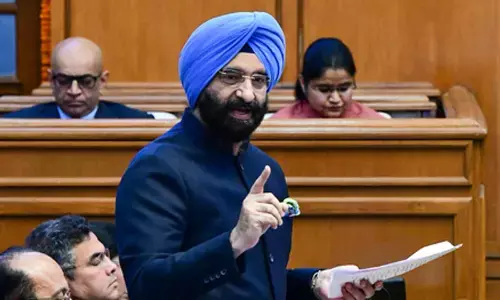India's burden: CVD epidemic in women

Representational image
Cardiovascular disease is the leading cause of mortality for women and was responsible for 35% of total deaths in women in 2019, Lancet reported recently.
Cardiovascular disease is the leading cause of mortality for women and was responsible for 35% of total deaths in women in 2019, Lancet reported recently. The Lancet researchers have called for urgent action to improve care and prevention, fill knowledge gaps and increase awareness to tackle worldwide leading causes of death among women.
Although globally the prevalence of CVD among women has been declining, with an overall decrease of 4.3 per cent since 1990, it has been increasing in India, the study has pointed out. These increases indicate a need for initiatives to expand prevention, diagnosis, and treatment of CVD in women who live in highly populated and industrialised regions. Despite the influence of social and cultural progress and awareness, there has been confounding stagnation in the overall reduction of cardiovascular disease burden for women, the magazine has noted.
It has been observed that distinct strategies are urgently needed to tackle inequities in the diagnosis, treatment, and prevention of heart disease in women; to advance innovative solutions for early detection and targeted management; to unravel the underlying biological mechanisms that contribute to sex-specific differences in outcomes; and finally, to decrease the global cardiovascular disease burden in women.
Cardiovascular disease in women remains understudied, under-recognised, underdiagnosed, and undertreated globally. India is no exception. Many factors contribute to inequality between men and women in the detection and management of cardiovascular disease. Women have been under-represented in, or excluded from, cardiovascular clinical trials, which has reduced the ability to measure the safety and efficacy of therapies for women, the potential for identifying sex-specific differences in important outcomes, and the development of sex-specific strategies that could lead to improved guideline recommendations for the prevention and management of CVD.
Although overall awareness about cardiovascular disease in women increased during the past decade, most healthcare providers and patients still tend to underestimate the cardiovascular risk in women. Awareness campaigns have paid little attention to the role of physicians in assessing risk factors that are specific to the female sex. The physicians who take direct care of women are underused in addressing cardiovascular risk and educating women about their individual risk. Although improvements have been made, current evidence suggests that women are still less likely than men to receive cardiovascular therapies recommended by guidelines, with the biggest shortfalls occurring in young women.
Sex-related differences in clinical presentation and comorbidities can contribute to this gap in guideline-recommended care, and sex-specific strategies are urgently needed to take these factors into account to provide optimal care for women. Crucially, women are more likely than men to be subject to health disparities that arise from sociocultural factors and socioeconomic and political contexts. For instance, gender discrimination, socioeconomic burden, and constraints on physical mobility often limit women's access to optimal health care in general, and to cardiovascular disease care in particular in India. To address the issue, more resources need to be directed toward applying the existing knowledge base to tackle the CVD epidemic in policy, programmes, capacity building, and research arenas. Will the governments wake up to the situation?















